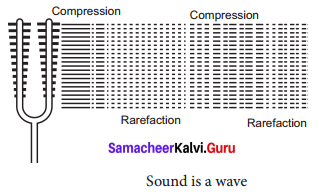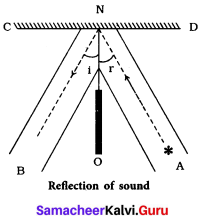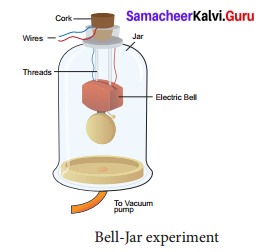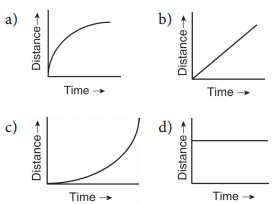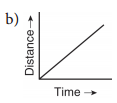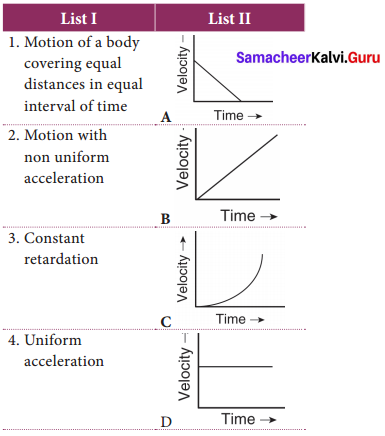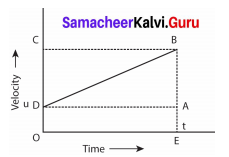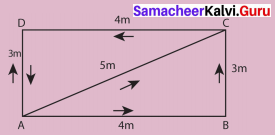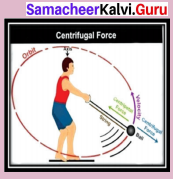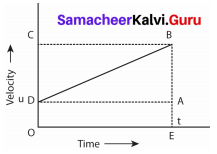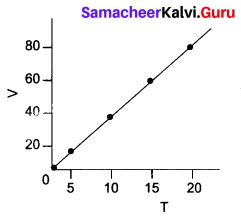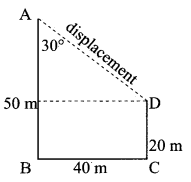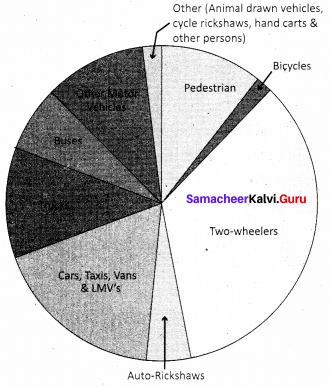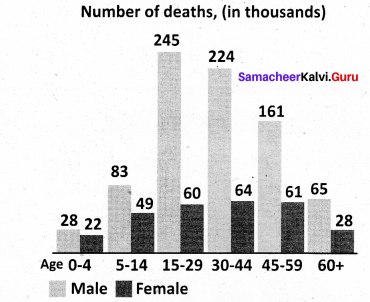You can Download Samacheer Kalvi 9th English Book Solutions Guide Pdf, Tamilnadu State Board help you to revise the complete Syllabus and score more marks in your examinations.
Tamilnadu Samacheer Kalvi 9th English Dialogue Writing
Exercises
1. Write a dialogue between a customer and a shop keeper.
Answer:
Customer : Good morning sir.
Shop Keeper : Good morning. What do you want?
Customer : I want an LED TV.
Shop Keeper : Which brand do you like, sir?
Customer : I want Philips TV.
Shop Keeper : What features do you want in it?
Customer : I want 40 inches along with 3D provision.
Shop Keeper : Here it is, sir. It costs Rs. 50,000/-.
Customer : Could I pay the money through debit card?
Shop Keeper : Yes sir. May I pack this for you?
Customer : Yes.
![]()
2. Write a dialogue with a minimum five utterances between a doctor and a patient who complains of stomachache.
Answer:
Patient : Good morning, doctor. I have stomach ache.
Doctor : Good morning. Since when?
Patient : From yesterday, doctor.
Doctor : Did you eat oily food from some platform stalls?
Patient : Yes doctor. I took non-veg items from a platform shop.
Doctor : The pain is due to bacterial infection. Take these tablets and tonic twice a day after food.
Patient : O.K. doctor. How much is the bill amount?
Doctor : It is Rs. 200. Take care of your health.
Patient : Thank you doctor.
3. Write a dialogue between you and your mother about the upcoming food carnival in your school.
Answer:
Daughter : Mummy, there will be a food carnival in our school.
Mother : Oh, It is very nice. When will it be organized?
Daugher : Coming weekend Mummy.
Mother : Do you know who are the participants?
Daughter : My teacher told that around 100 students of classes XI and XII would participate.
Mother : What type of food will they prepare? .
Daughter : They will prepare national and international delicacies that represent various states.
Mother : Will there be fast food stalls?
Daughter : Definitely such stalls will not be allowed. Only traditional food items will be prepared by them.
Mother : That is very good.
Daughter : My teacher instructed that each and every student should bring their parents to the carnival, Mummy.
4. WrIte a dialogue with at least 5 utterances between the manager of a restaurant and an angry customer who finds a fly in his soup.
Answer:
Waiter : Here’s your soup, Sir.
Customer : Thank you. (tastes the hot soup). What’s this? Eek! A fly in my soup. (shouts) Waiter! No, I’d better talk to the manager.
Manager : Is something wrong?
Customer : It is the soup that is wrong.
Manager : What happened, sir?
Customer : I ordered for a vegetarian soup but ¡ was served a non-veg soup.
Manager : A non-veg. soup? In this hotel?
Customer : Yes, certainly. See this.
Manager : Oh, I’m extremely sorry. Waiter, get him another bowl of soup.
Customer : Oh, no, thank you, not another non-veg. soup.
![]()
5. Write a dialogue with at least five utterances between a bank manager and a student who wants to open a bank account.
Answer:
Student : Good morning sir, I wish to open a Savings Bank account.
Banker : Good morning. Go through this application, please.
Student : Application seeks information about my address, occupation and income details.
Banker : Yes. Please fill it.
Student : How much should I deposit initially?
Banker : You should deposit at least 500/- If you need a cheque book, you have to maintain a minimum balance of 1000/-
Student : Should I produce any documents?
Banker : Yes, bring a xerox copy of your ration card and you need to give two passport size photos. An account holder of this bank should give a letter of introduction.
Student : Sure, Sir. Thank you.
Banker : Come with all the necessary papers and meet the clerk.
Student : 0k sir, Thank you!
![]()
